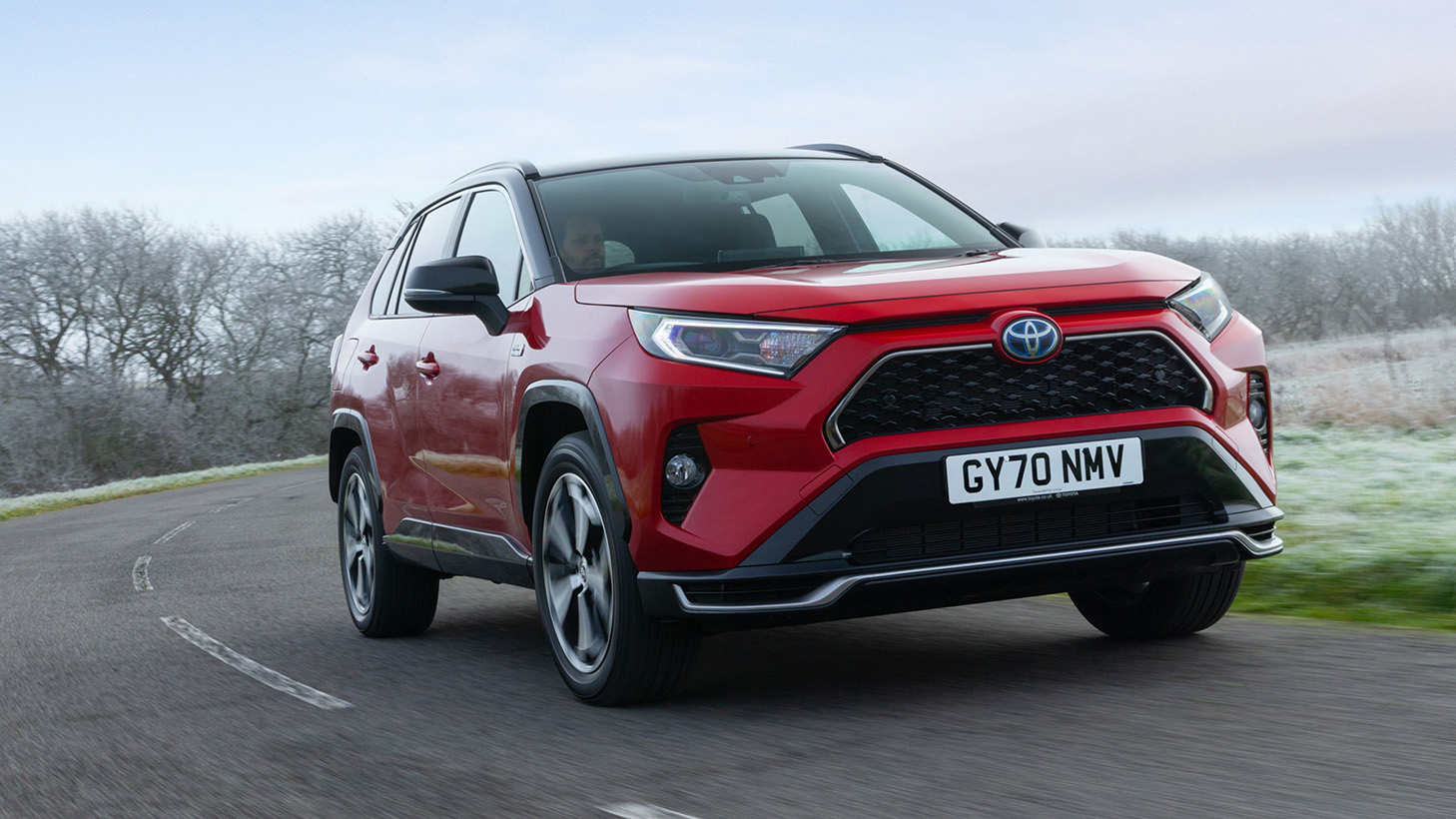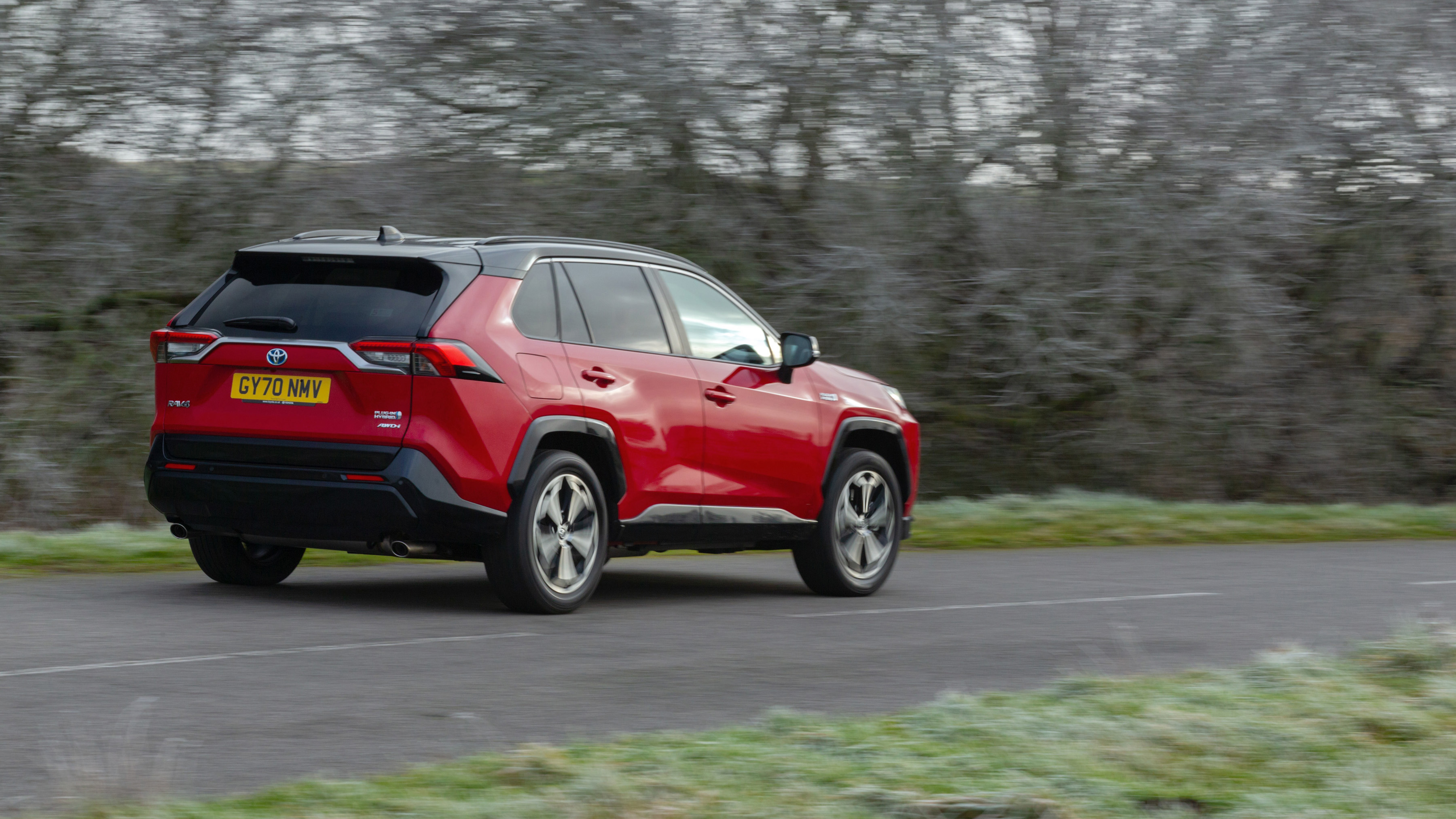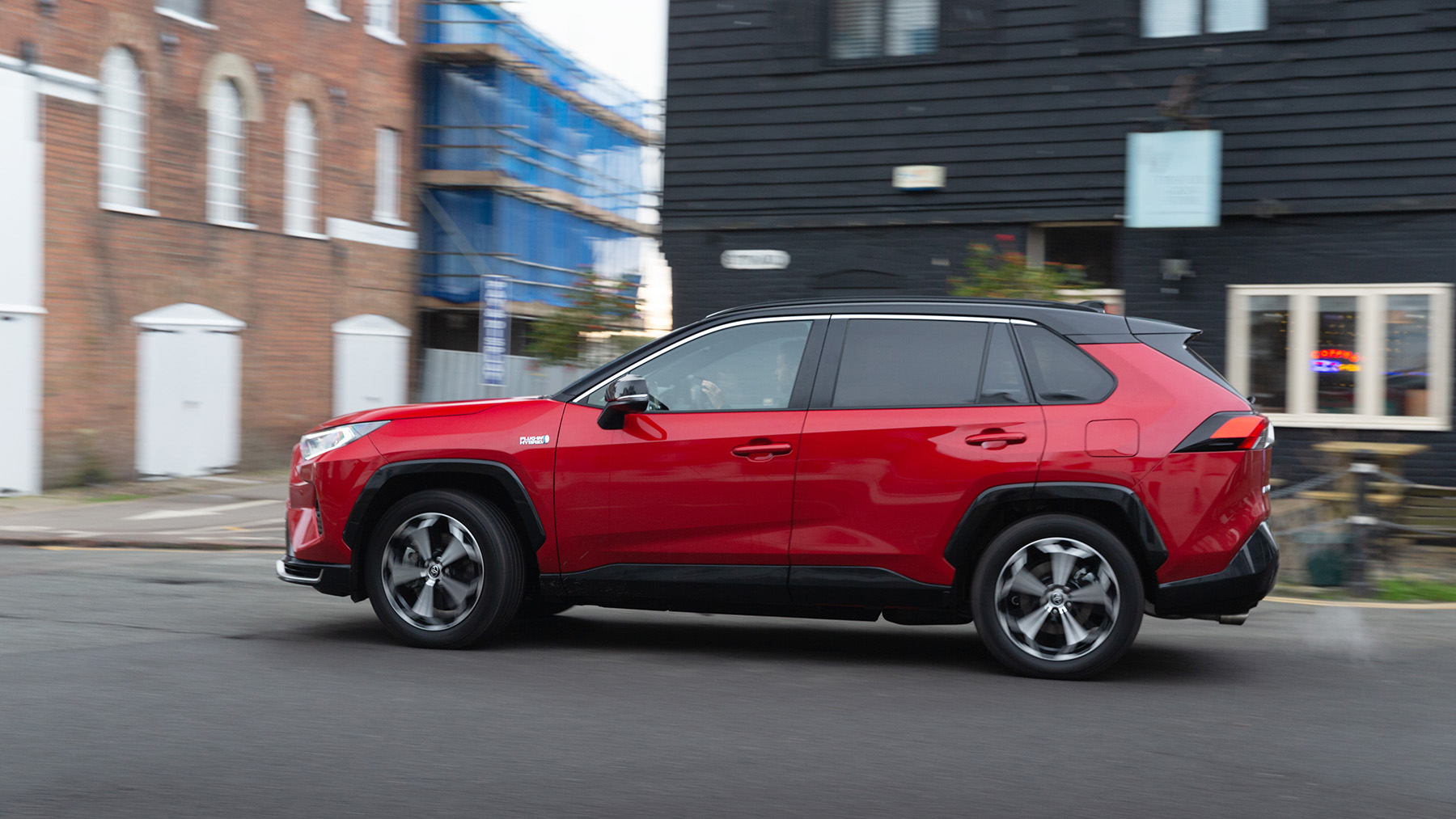
SPEC HIGHLIGHTS
- Battery
Capacity18.1kWh
- BHP
306bhp
- 0-62
6s
- Max Speed
112Mph
I thought all the dull Toyotas were hybrids? What’s special about this RAV4?
This is the first RAV4 you can plug into the mains. Toyota’s Recreational Activity Vehicle has been a hybrid-only zone in the UK for a few years now, but only as a Prius-style mild hybrid. Charge up the batteries when you brake, deplete them as soon as you breathe on the throttle. Clever in town and easier to use than a light switch. You’ve probably seen the slightly cheeky ‘self-charging hybrid’ adverts.
Let's say you’re alright with occasionally plugging in. You fancy some useful electric-only range. Toyota – king of the hybrids – has been caught on the hop by the likes of the Ford Kuga PHEV. Heck, even Vauxhall managed to beat these guys to getting a half-electric crossover on the streets.
I get it, it’s a RAV4 with a bigger battery and a plug socket, right?
Pretty much, but let’s dig a little more into the numbers. First thing you should know is the RAV4 is always true to its name. It stays four-wheel drive, even when running as an EV.
Unlike say, a Volvo XC60 PHEV which is either front-wheel drive, rear-drive or a 4x4 depending on what fuel you’re using at that moment, the RAV combines a 180bhp front motor with a 54bhp rear motor.
So, you can enjoy the warm, fuzzy feeling of saving the planet along with the peace of mind of humiliating puny nature by trampling anything in your path.
The petrol engine is a mite less powerful than in a mild-hybrid RAV4, and the front electric motor is stronger, as you’d expect now it can be relied upon to do more work more of the time.
An electric-only top speed of 84mph is impressive, but blatting down the outside lane of a motorway on volts alone feels a bit wasteful. That’s going to dramatically stall your chances of getting near the claimed 46-mile zero-emissions range.
The car always defaults to E-mode on start-up, best to get into the routine of prodding the ‘Hybrid Vehicle’ button on the centre console if you’re off on a longer jaunt. Just popping to the shops? Leave it in the milk float setting. And feel smug that VW Group PHEVs force you to mess about in laggy touchscreens to make their hybrids do your bidding.
Top Gear
Newsletter
Thank you for subscribing to our newsletter. Look out for your regular round-up of news, reviews and offers in your inbox.
Get all the latest news, reviews and exclusives, direct to your inbox.
That looks like a big hit of electric power. Is it fast?
Don’t ask me. Ask the poor guy in a Golf GTI who unselfishly moved over as I indicated to join a dual-carriageway last week, only to helplessly watch the RAV4 steam off toward the horizon as he – a dwindling speck in the mirrors – sheepishly pulled back in behind.
When the twin e-motors megazord with the unremarkable 2.5-litre non-turbo petrol engine, the result is a heady 302bhp. Even with a kerbweight just shy of two tonnes, the RAV4’s rapid. But not sporty. We’ll come back to that…
Sounds like a fun secret weapon.
That’s not the best bit. No, the best bit is how proper electrical boost takes the pain and tinnitus out of driving a big, heavy car fitted with a CVT gearbox. Normally these elastic-band transmissions panic when asked to out-accelerate a glacier, and pin the revs higher than a terrified learner attempting a hill-start. In a Porsche Carrera GT.
But because the RAV4-PHEV can lean back on its cushion of surging electro-torque, the engine never sounds strained, like it’s going to burst through the glovebox and ask you to ease up on steep hills.
Going PHEV has made the RAV4 heavier and more expensive, but it’s made it a heck of a lot nicer to drive.
Good. But has it made it cheaper to run?
It’s nicely efficient: 2.3 miles per kWh in EV mode matches our recent best in the all-electric Audi e-tron. Awkward. If the whole 18.1kWh battery capacity was useable that’d equate to 41 miles of e-range, but somewhere around 35 miles is more plausible.
Running as a hybrid, economy settled at around 40mpg. Total range when brimmed with petrol and electricity was close to 500 miles. It’s all very respectable, which makes the claimed 280mpg and 22g/km lab figures all the more ridiculous.
None of that’s Toyota’s fault (don’t hate the player, hate the game and all that). Still, hardly helps rebuild the buying public’s trust in the post dieslegate age, does it?
Course, what makes the RAV4 a clever PHEV is viable all-electric range – even in the depths of winter you can crank up the heated seats – front and rear – and manage a decent round trip to school, work or the shops without waking the engine. Then there’s the free road tax, and the rock-bottom company car bill.
And the bad news? There must be some bad news.
The Curse of the PHEV is once you’ve depleted its battery, you’ve got a 2,000kg lump – including a chunk of useless battery ballast – hauled by a reedy, overworked engine. You and the RAV4 will very quickly go off one another if you ever dare to drop the charge needle into the red. You have been warned.
Can I get away without a proper charging station?
Probably. A full recharge from a household socket takes seven and a half hours, so you could feasibly replenish it overnight, or during the day between school runs. A proper wallbox drops that charge time to 2.5 hours.
A good family car then?
You won’t want for space – though there is only seating for five rather than seven, which you might expect given the car’s exterior bulk. The boot’s big, at 520 litres (though you’ll die of old age waiting for the infernal beeping auto tailgate to make its mind up).
Unlike Suzuki’s identical Across, which is a RAV4 PHEV with a friendlier face, there are two different trim lines to choose from, but not a base model as such. Pick from either a £47,395 ‘Dynamic’ version with 19-inch rims, a 9.0-inch touchscreen with Apple and Android mirroring, dual-zone climate control, keyless entry and start, and adaptive cruise control, or pay £50,895 to bag the range-topping Dynamic Premium. It adds a glass roof, JBL hi-fi and ventilated seats.
We’d stick with the lower-grade model – it looks the same, has all the kit you’re ever likely to actually use, and we found it online for £60 a month less than the spanglier one. Besides, the chunky, rubberised cabin hardly screams fifty-grand-premium quality, and neither do the on-screen graphics.
What if I actually like driving and stuff?
Then you’ll want a Ford Kuga. The RAV4 is not a sporty SUV. It’s an appliance. But that’s fine. Besides a bit of motorway wind rustle it’s an accomplished cruiser, a comfy rider, and it’s enjoyably undemanding to coax along.
It’s comfy in its own skin, this car. Plug-in hybrid powertrains don’t suit smaller family hatchbacks – the batteries eat up too much space. You’re more aware of the spoiled, weight-sullied handling.
You don’t get into a RAV4 expecting to have a laugh unless it’s from a funny podcast on the stereo. You expect the practicality and common sense that comes with flogging 10 million RAV4s and counting. Best-selling SUV in the world, this thing. So far as unpretentiously sensible cars go, it’s right up there with the worthiest of them.
Score: 8/10
£50,895
2.5-litre 4cyl + 2 e-motors, total 302bhp
CVT, AWD
0-62mph in 6.0 seconds, 112mph
282.5mpg, 22g/km CO2
1975kg
Featured

Trending this week
- Car Review
BMW iX3






